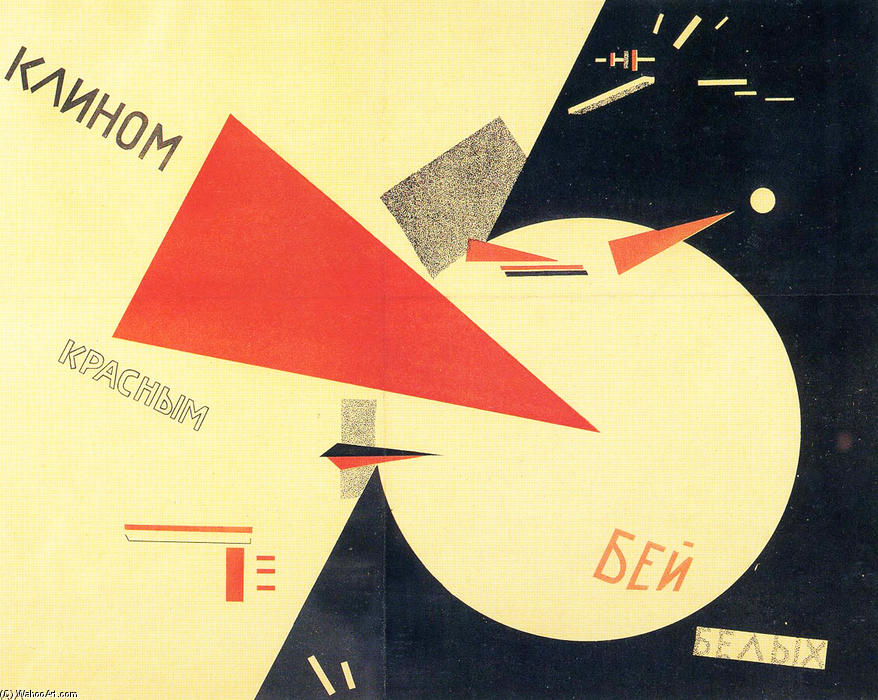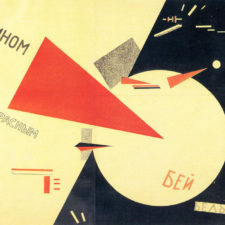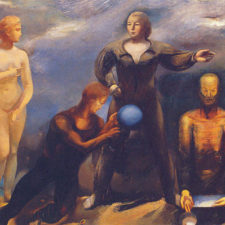The artistic avant-garde of the ‘ 900 in Russia have been the mirror of what was happening in society. We lived in the early 900 an atmosphere of change, turning from a past uncomfortable and stiff. The same Vladimir Mayakovsky wrote, “Purge the heart from stuffiness. Roads are our brushes, the squares our palettes. “and it’s in this sentence that summarizes the approach to colour, shapes and themes covered in the painting. The aesthetic of the 1800s are twisted, you search the new in his every phrase until you feel the need to express the art in the social and economic revolution.
The suprematism.
In posters in support of World War I of Vladimir Mayakovsky and Kazimir Malevich childlike drawing of figures, identifiable thanks to well-known stereotypes, it usually accompanies written describing the scene. The Suprematism is based on the “supremacy of pure sensibility in art”: the object loses meaning, then the art that represents it is totally separated from the natural reality.
The cubo-futurism.
The cubo-Futurism is a term coined by critic Kornej Cukovskij in 1913 to indicate the particular fusion of elements of French Cubism and Italian Futurism implemented by a group of Russian artists, including Kazimir Malevich known to the general public for the famous black square, Ivan Kljun, Olga Rozanova. Their paintings combine the fragmentation of the object in its geometric planes of cubism, with the representation of movement through the repetition of motifs, from elliptical futurism, arriving finally to an innovative description of spatio-temporal dimension.
The constructivism.
In clear opposition to the Suprematism of the Constructivism of Vladimir Tatlin, which starting from three-dimensional reliefs trials and corner-counter reliefs, proposes an art far from aestheticism end in itself and closer to the real needs of society. Again in this case too the art reflected the Marxist Materialism on which was based the new Soviet State.
The charming atmosphere of the Russian cosmism, a term that refers to the artistic movement and not linked to the passion for the study of the universe that in Russia manifested strongly in early ‘ 900. This resulted in elaborate theories about the possibilities of expansion of humanity in the universe, which inspired not only science fiction literature but also the Soviet space program. The artists of the avant-garde disclaim these themes in “cosmic images”, as the cyclical Construction. Red light (1923) by Ivan Kljun where a ball of light seems to emerge or sink in the silent darkness of space.
In accordance with the principle of the art at the service of society, artists of the so-called electro-organism designed to represent the creation of artificial light with technical equipment: works as “Luminism. Dynamics of form and colour “of Clement Red ‘ ko, were perfectly in line with the campaign launched by Lenin in 1920 which aimed to bring the electricity across the country.
In the late ‘ 20 the socialist realism imposed by Stalin’s totalitarian Government would be statoraggiunto by a realistic style simple, accessible to the masses and to dignify the Soviet State. We can see some examples in the lunar landscapes of Ivan Kljun and gouache on paper stained of Solomon Niktrin.







